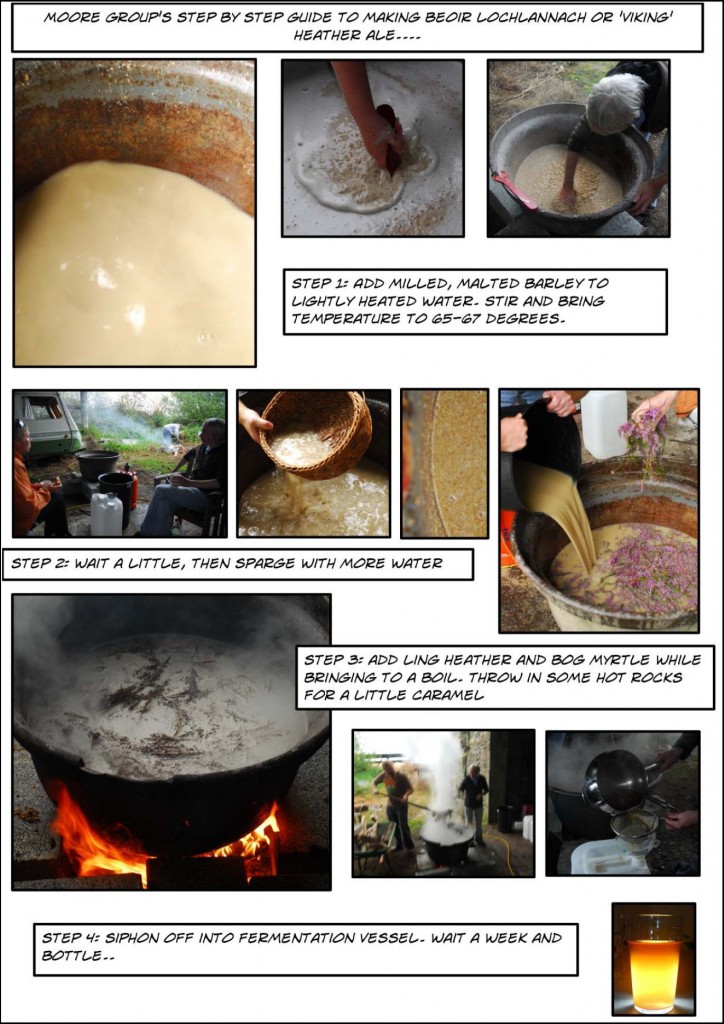How to make a ‘Viking’ Ale in 4 easy steps
Here’s a short comic we made about how to make the ‘Viking’ Ale, which has been reported widely on, to our surprise.. (see here, here, here and here). We spent Sunday bottling and experimenting with another variation (which didn’t quite succeed – more on that some other time). Our ‘Viking Ale’ has turned out to be 5.5% ABV, which is unexpectedly strong… The recipe is based on one recounted to John Locke and published in the Ulster Journal of Archaeology in 1859 (more here). Locke said he was told the tale by a peasant living in Cork in 1847 who claimed to be nearly 100 years old, and who said he got the story from his grandfather, which would take us to at least the late 1600s. You can also listen to Billy talking about the ale on Newstalk‘s Moncrieff show for another few days. Select the playback popout for the Moncrieff show, Part 2, at about 50 mins in…
Click here for a pdf version of our Brewing 2010 comic

This entry was posted on Monday, September 27th, 2010 at 3:40 pm. It is filed under About the Beer and tagged with archaeological consultants, Archaeological experiments, Beer, Beoir Lochlannach, Bog Myrtle, heather ale, Viking Ale, Viking Beer.
You can follow any responses to this entry through the RSS 2.0 feed.




Wish I’d been there to taste it!
I’ve never dug up a Viking age or prehistoric “fermentation vessel.” Any idea what they might have used?
Hi Mark – The recipe we used (referred to in Irish folklore as Beoir Lochlannach, which means ‘the Viking Beer’ or the ‘Scandanavian’ Beer) is based on one recounted to an antiquarian called John Locke and published in the Ulster Journal of Archaeology in 1859. Locke said he was told the tale by a peasant living in Cork in 1847 who claimed to be nearly 100 years old, and who said he got the story from his grandfather, which would take us to at least the late 1600s. So our ale is really an Irish Ale which was associated in folklore with the Vikings. To call it a Viking Ale might be a little bit of a misnomer. Interestingly, the Irish name for Ling Heather is Fraoch Lochlannach (meaning Viking or Scandinavian Heather), so there are lots of pointers to heather ale deriving from significantly earlier times. And… according to an interesting folk tradition from Burrishoole, near Newport, Co. Mayo, fulachta fiadh were used by the Danes for making heather ale. This is briefly mentioned in Chris Corlett’s ‘Antiquities of West Mayo’. Although the fulachta fiadh predate the Vikings by several millennia the links between these sites, the Vikings and heather ales was one of the inspirations for our original hot rock, pit brewing experiments.
Regarding fermentation vessels, any large wooden bucket, container or earthenware vessel (perhaps with a fitted lid) would suffice. I haven’t come across any references to beer stone (calcium oxalate) recovered from Viking pottery (this presents as a residue left in vessels used for fermentation), but it may be a case that few tests have been done to date. As far as i know, once a vessel, or sherds of same, is cleaned it is unlikely to be suitable for testing.
[…] The wonderful Fraoch by the Williams Brothers contains heather and bog myrtle. Here’s a fun cartoon of the Moore group’s brew day. They used a big old cast iron pot with a fire lit under it to […]
What yeast was used to ferment the ale? Would love to try this but on a smaller scale obviously
Hi Adam – We just used an American Ale Yeast – kindly provided by the Galway Hooker people. Since then we’ve just used whatever yeast is available at the local homebrew shop…